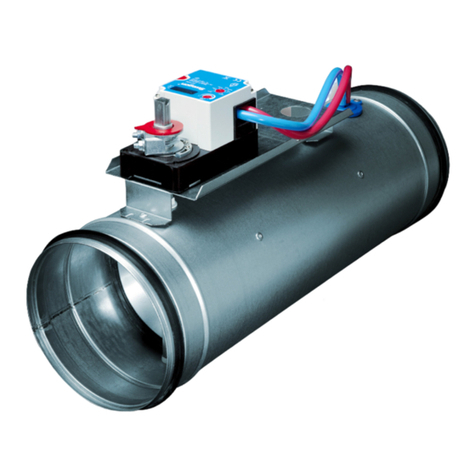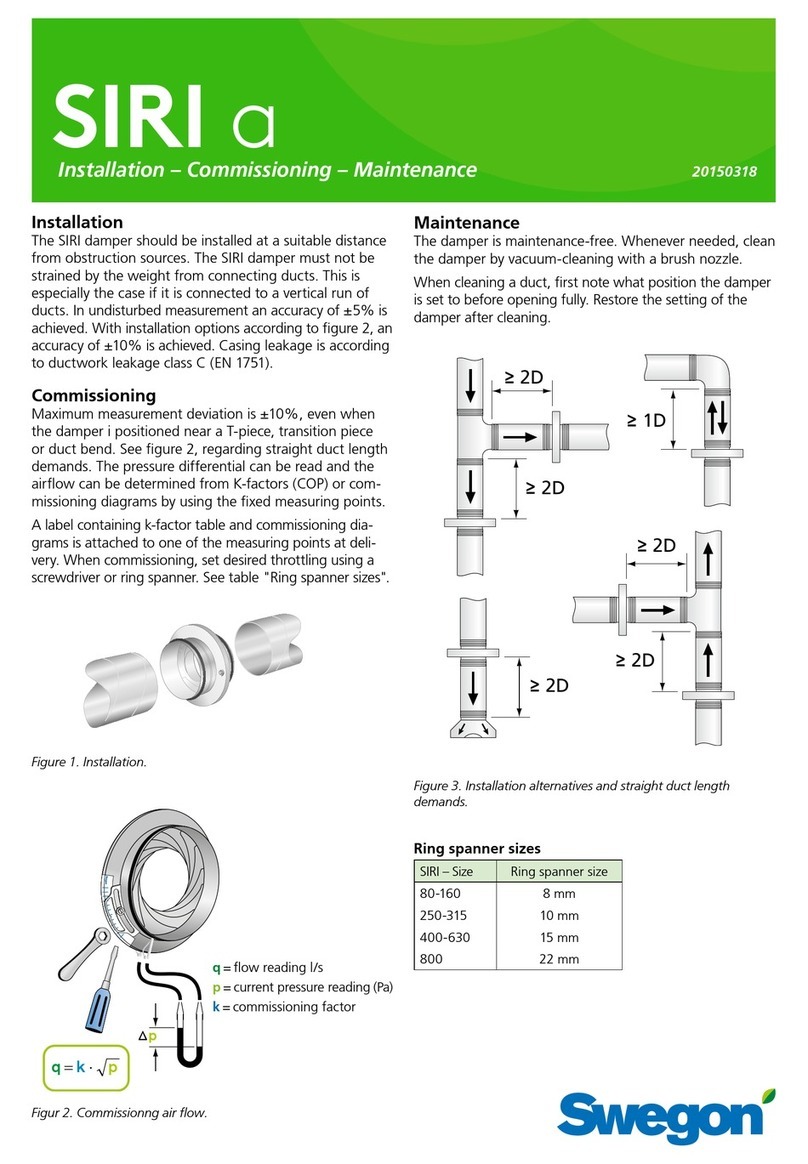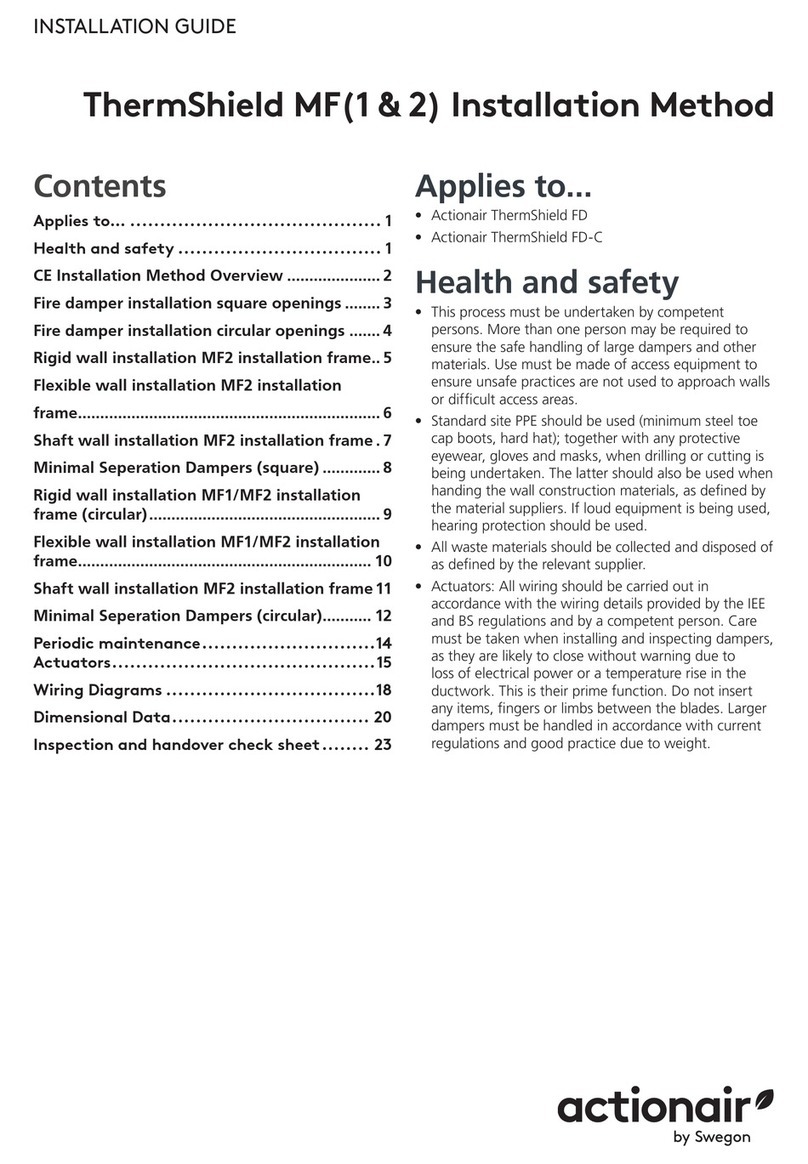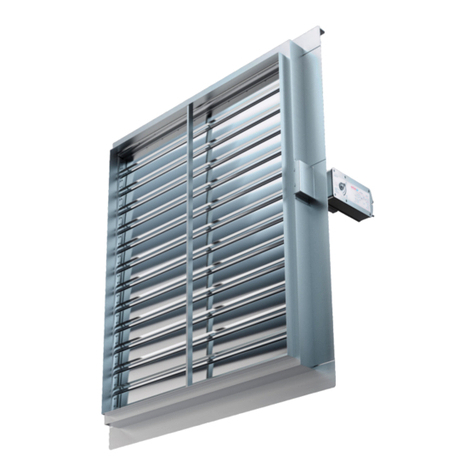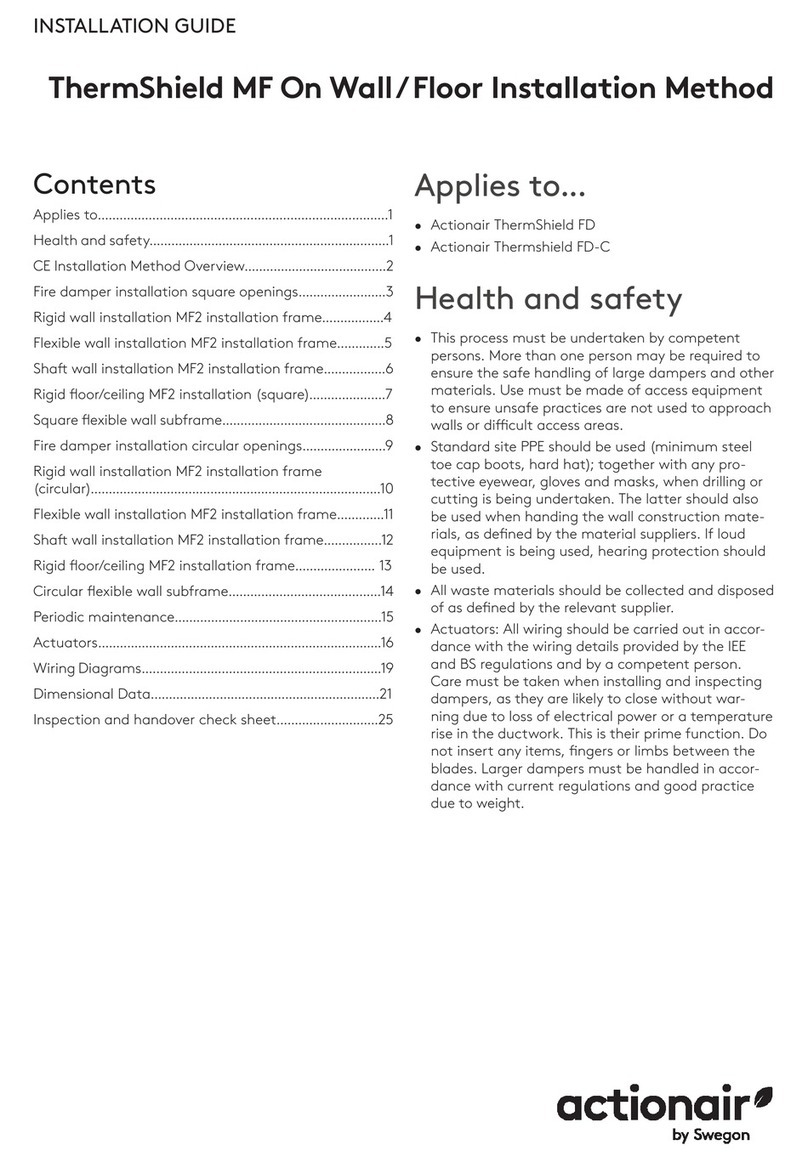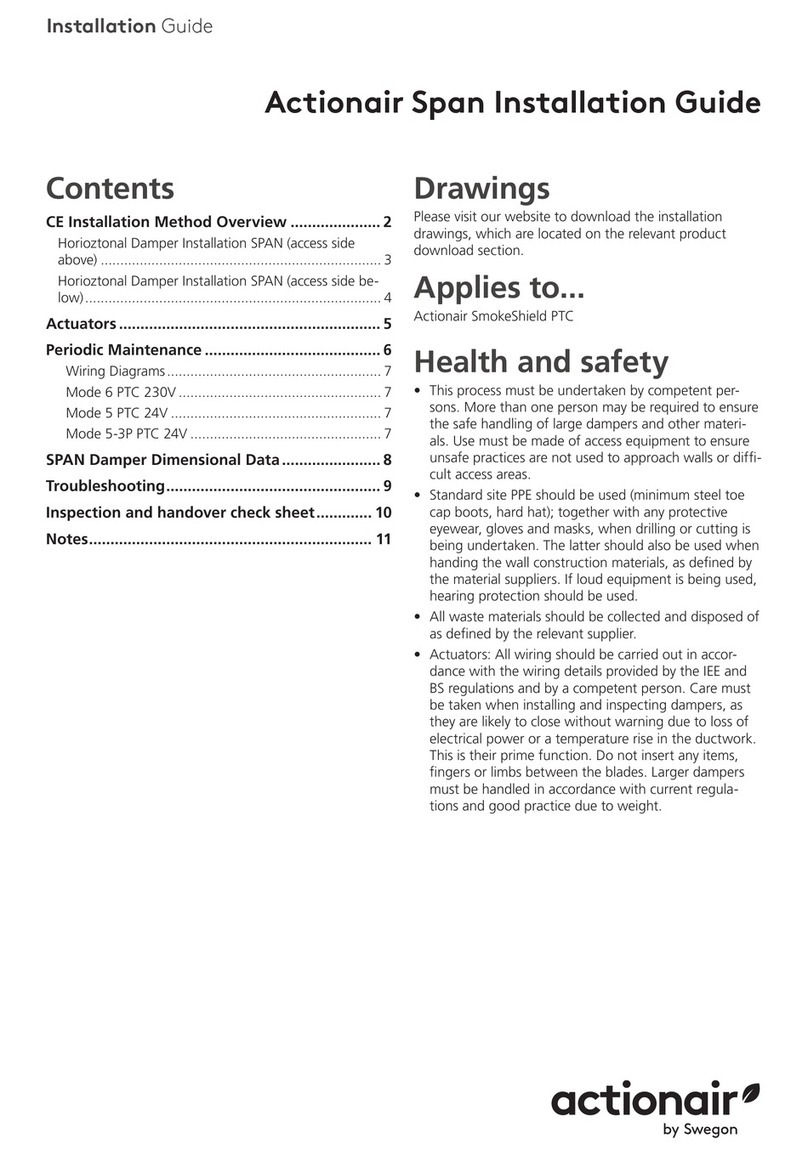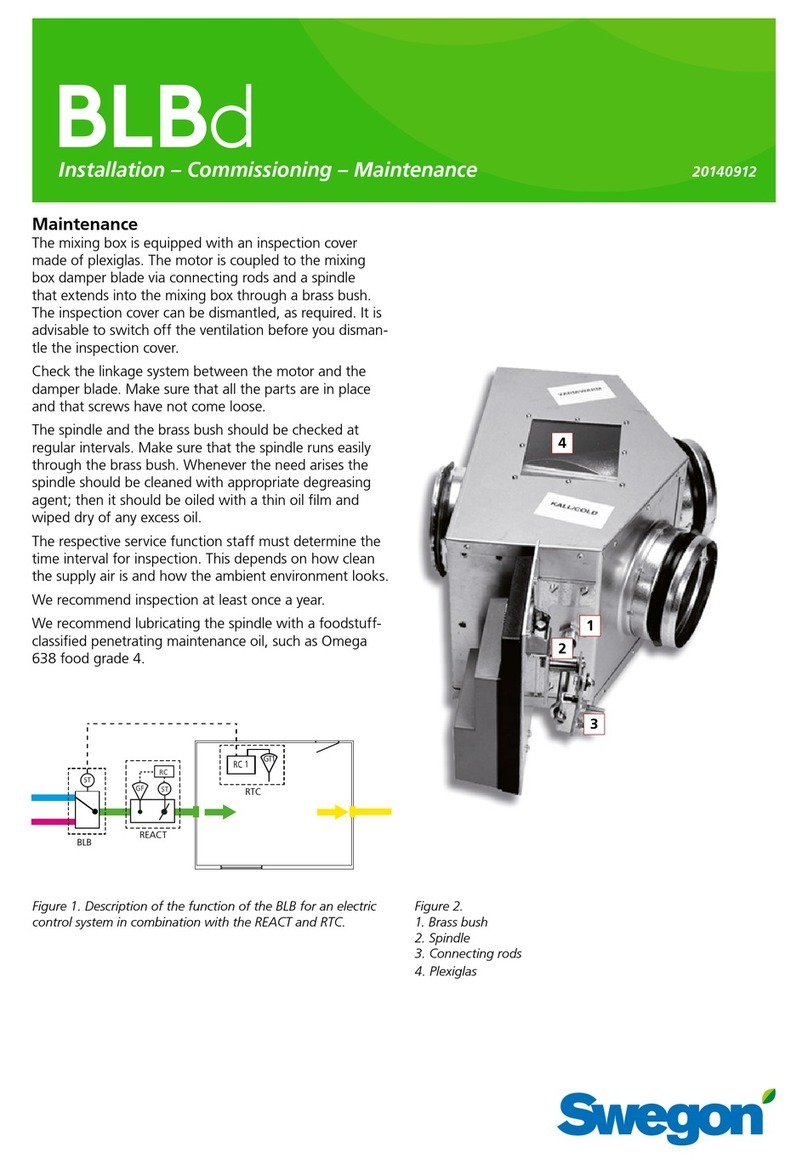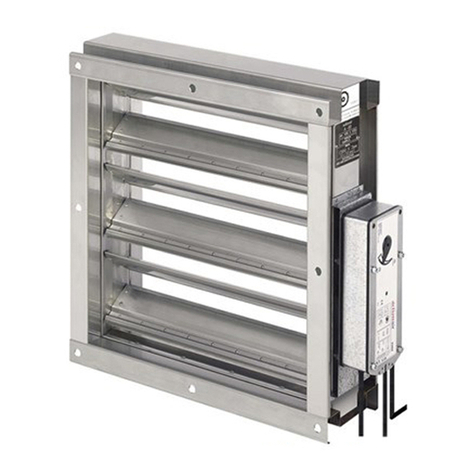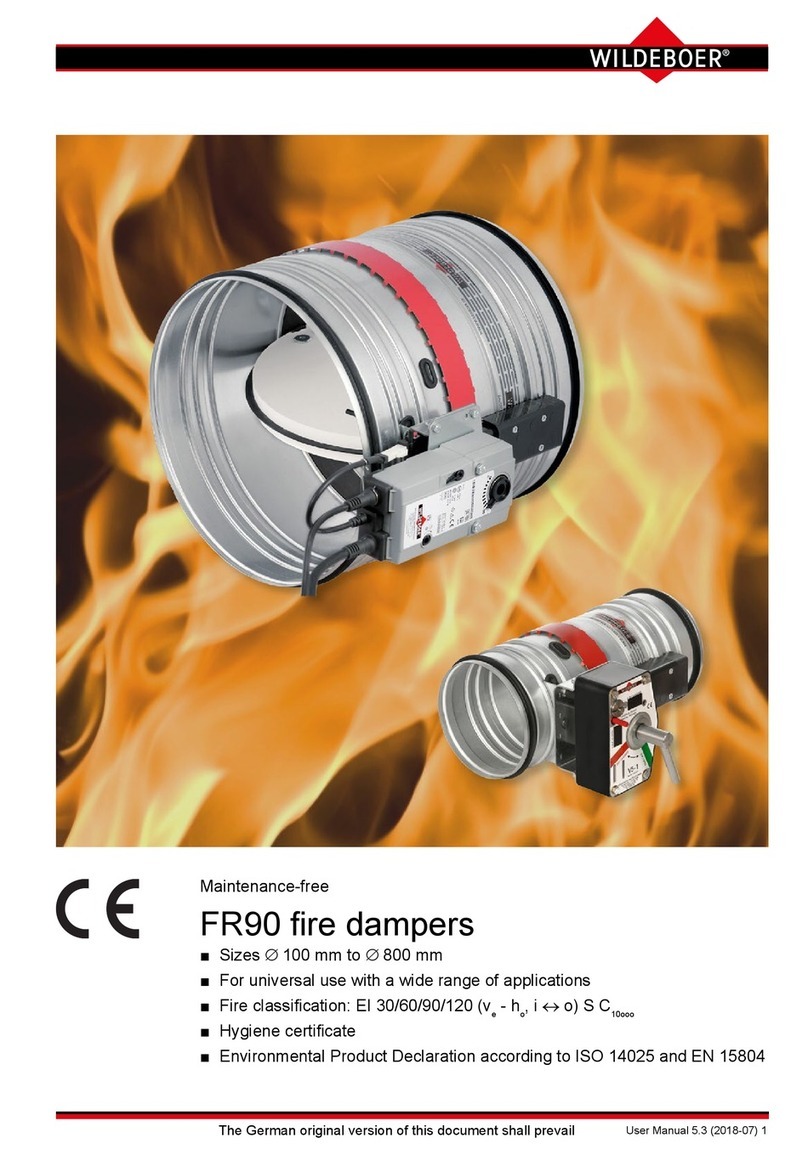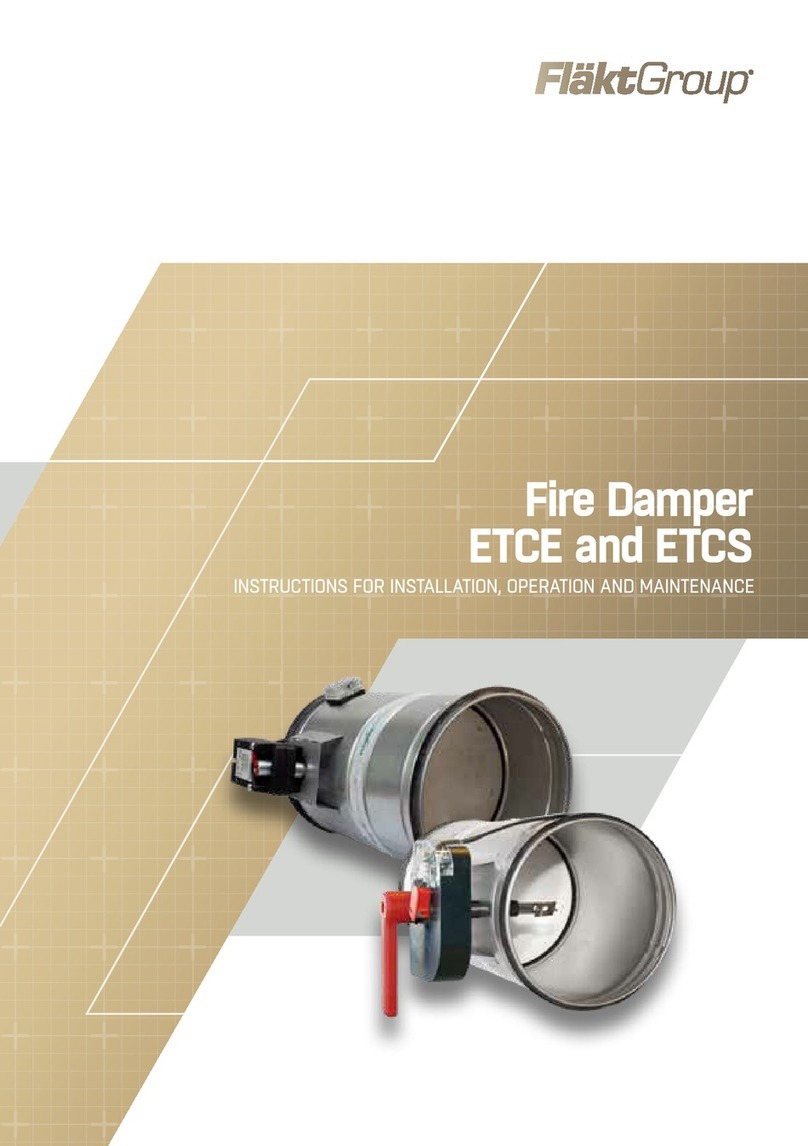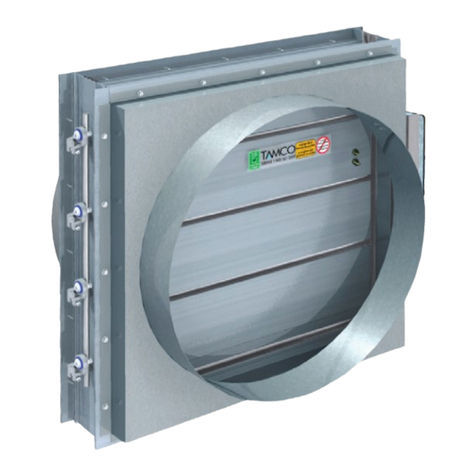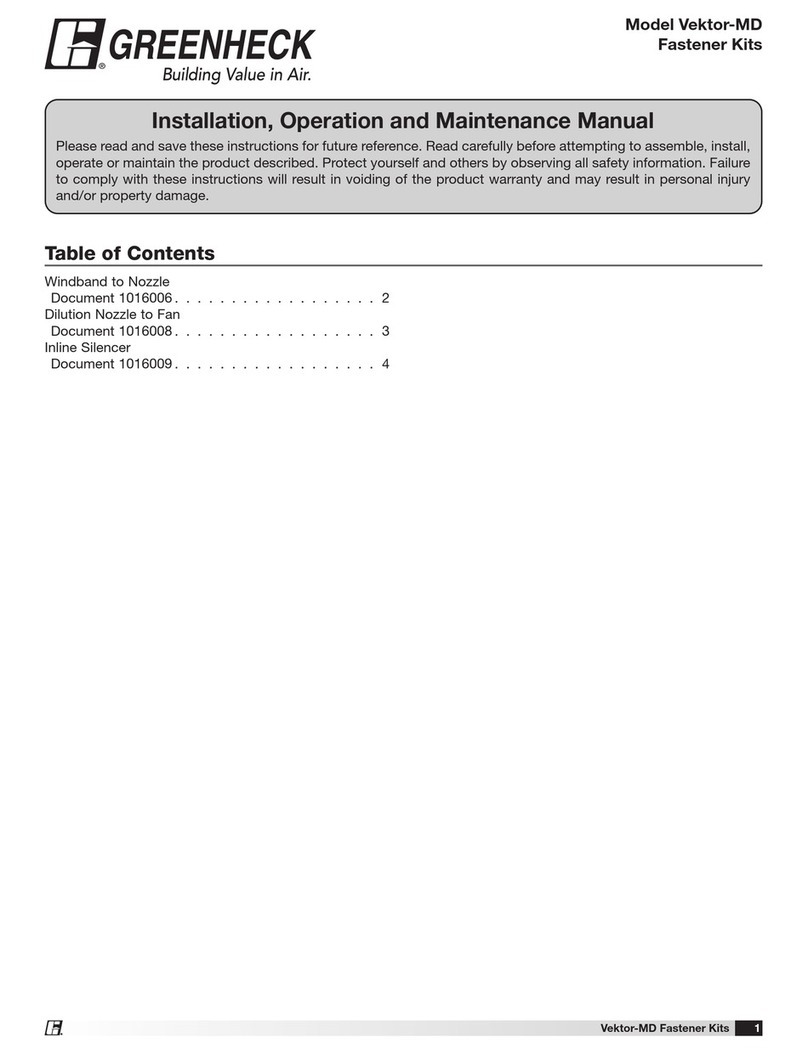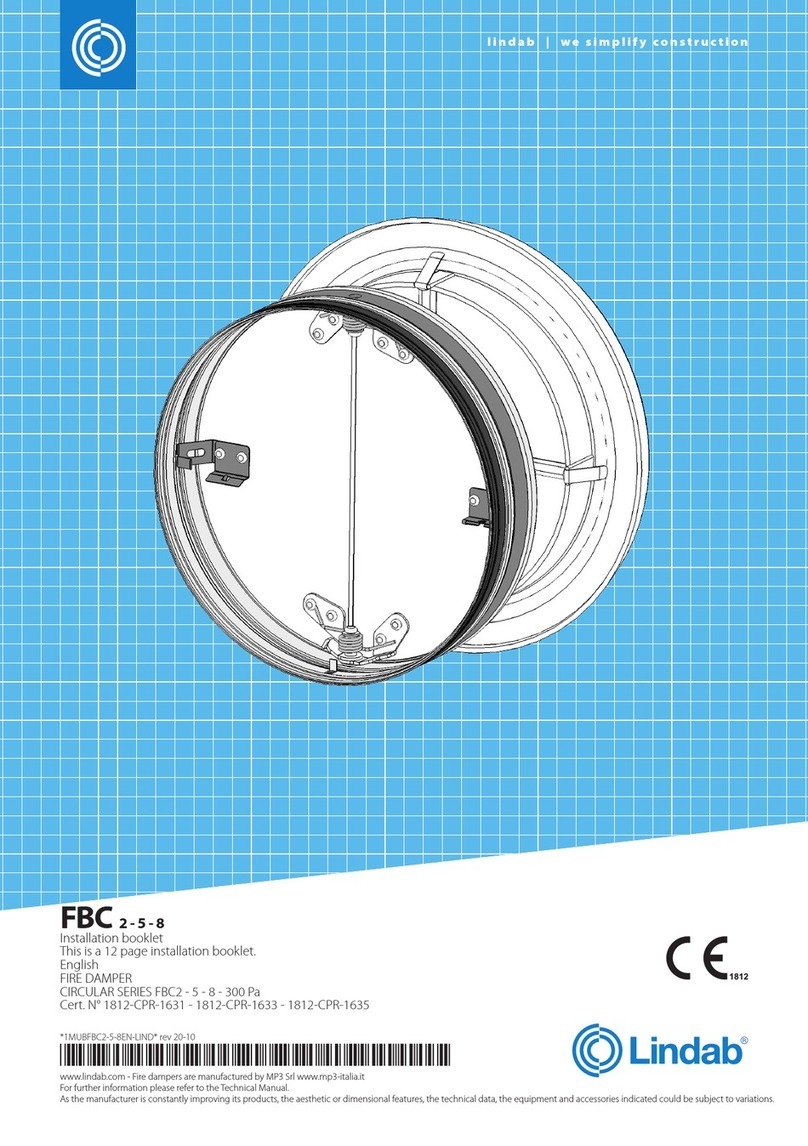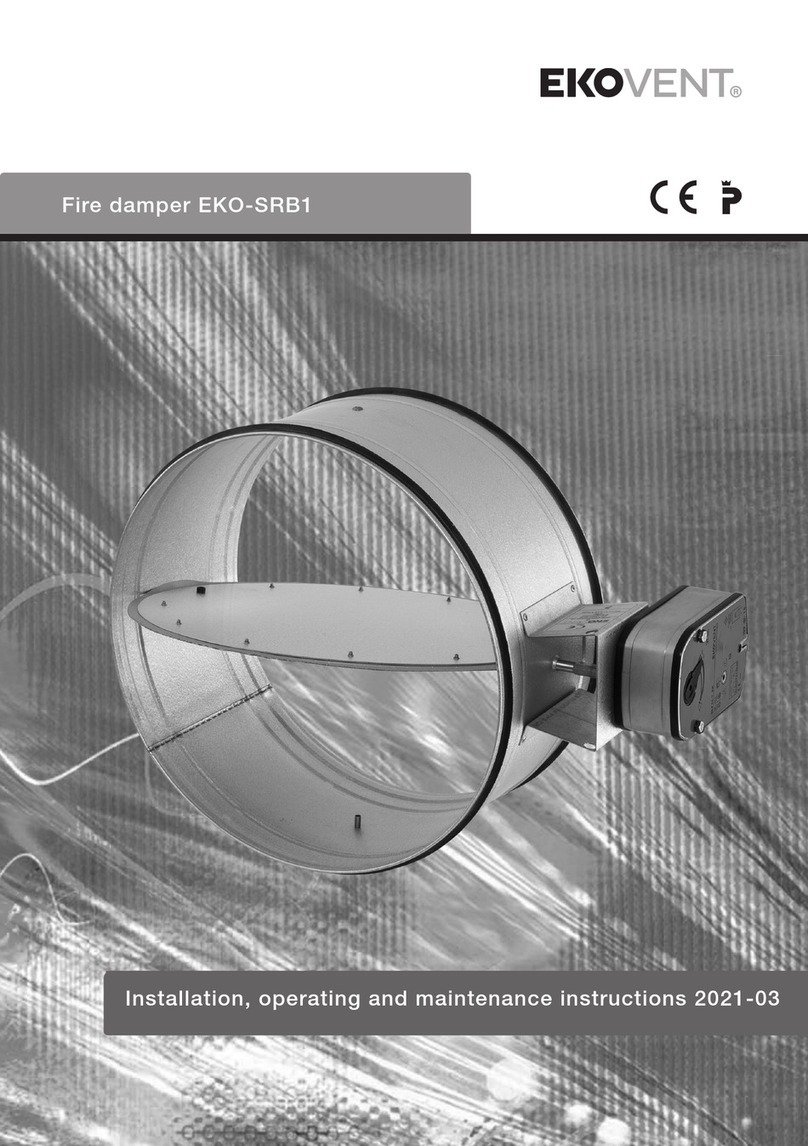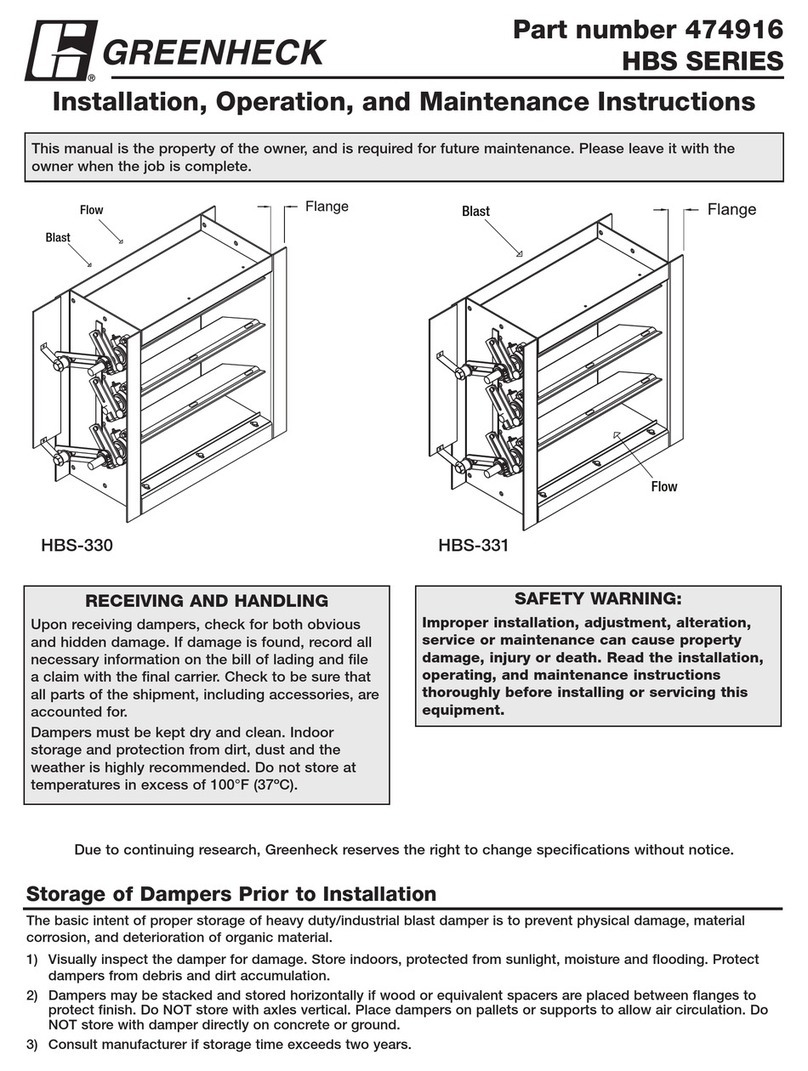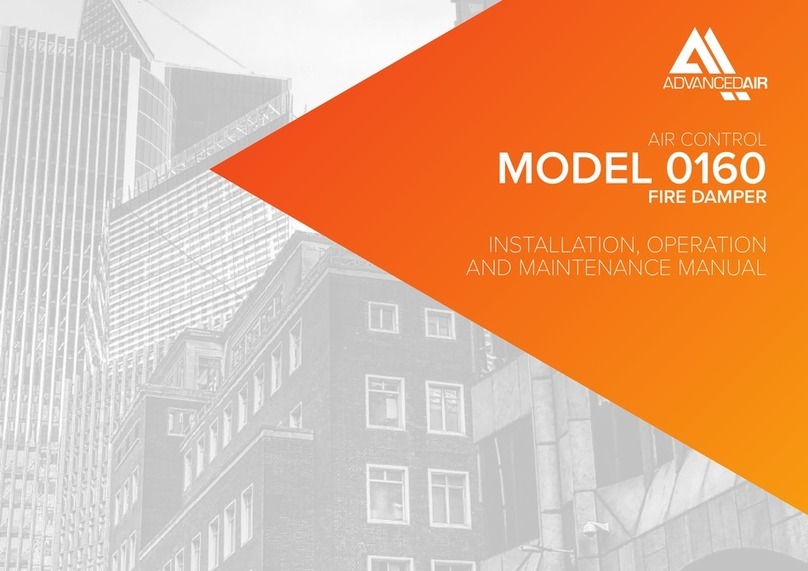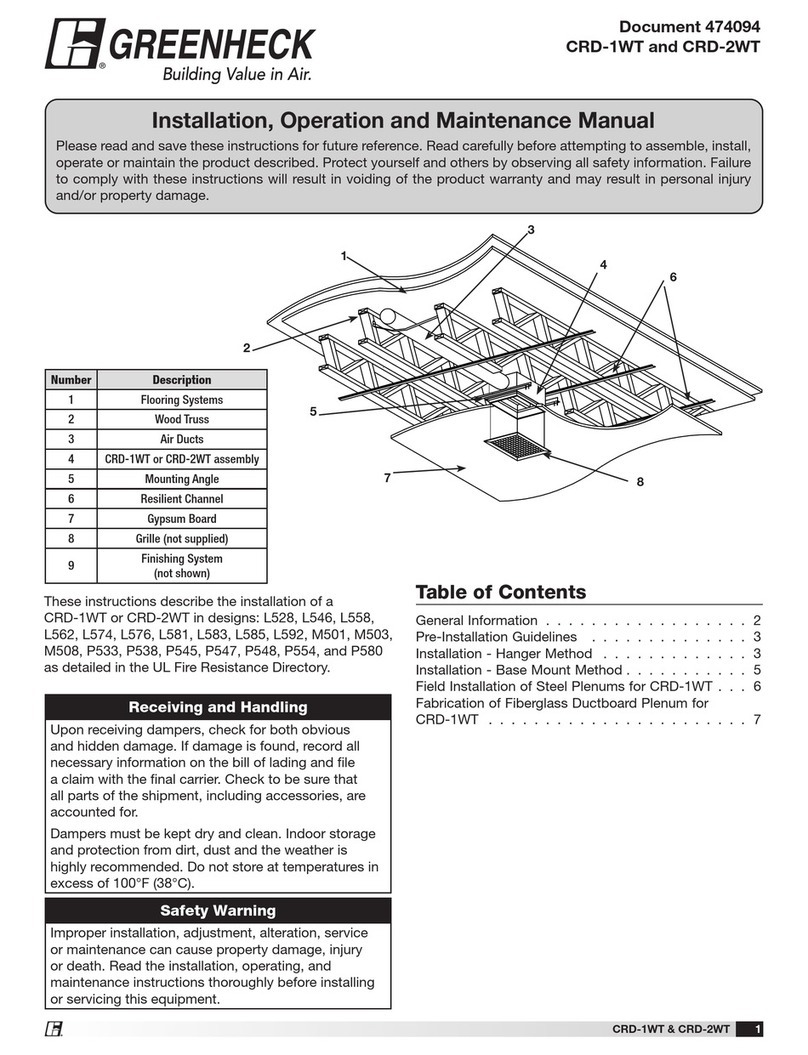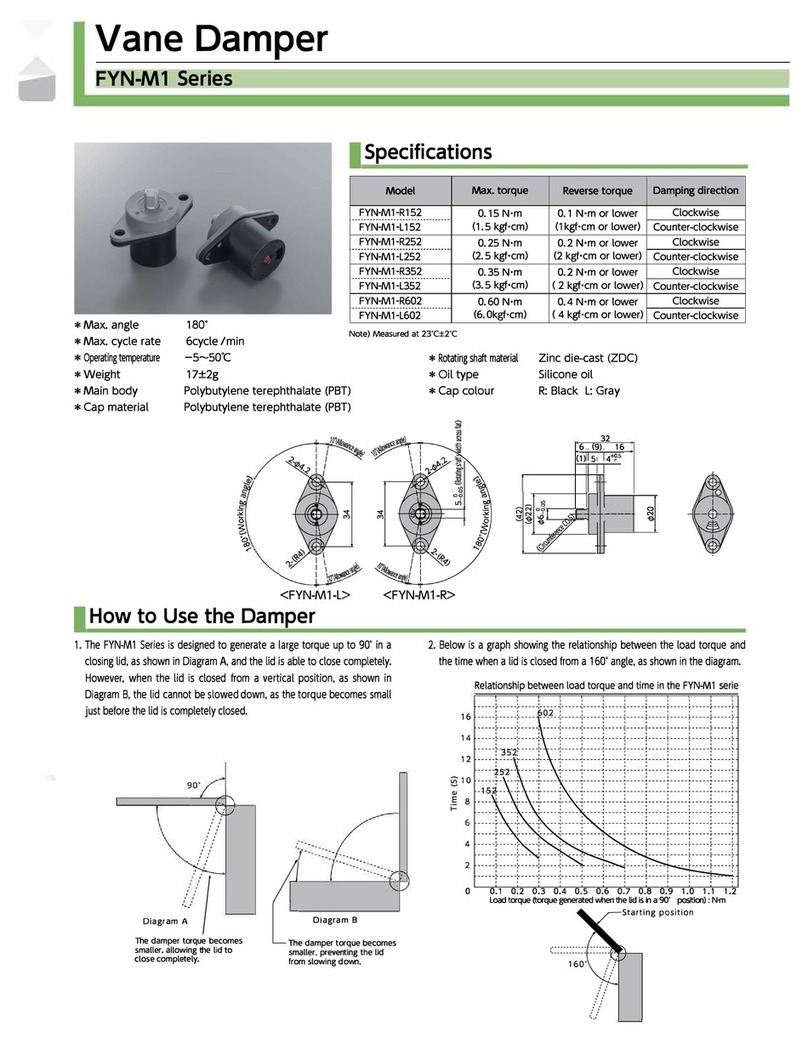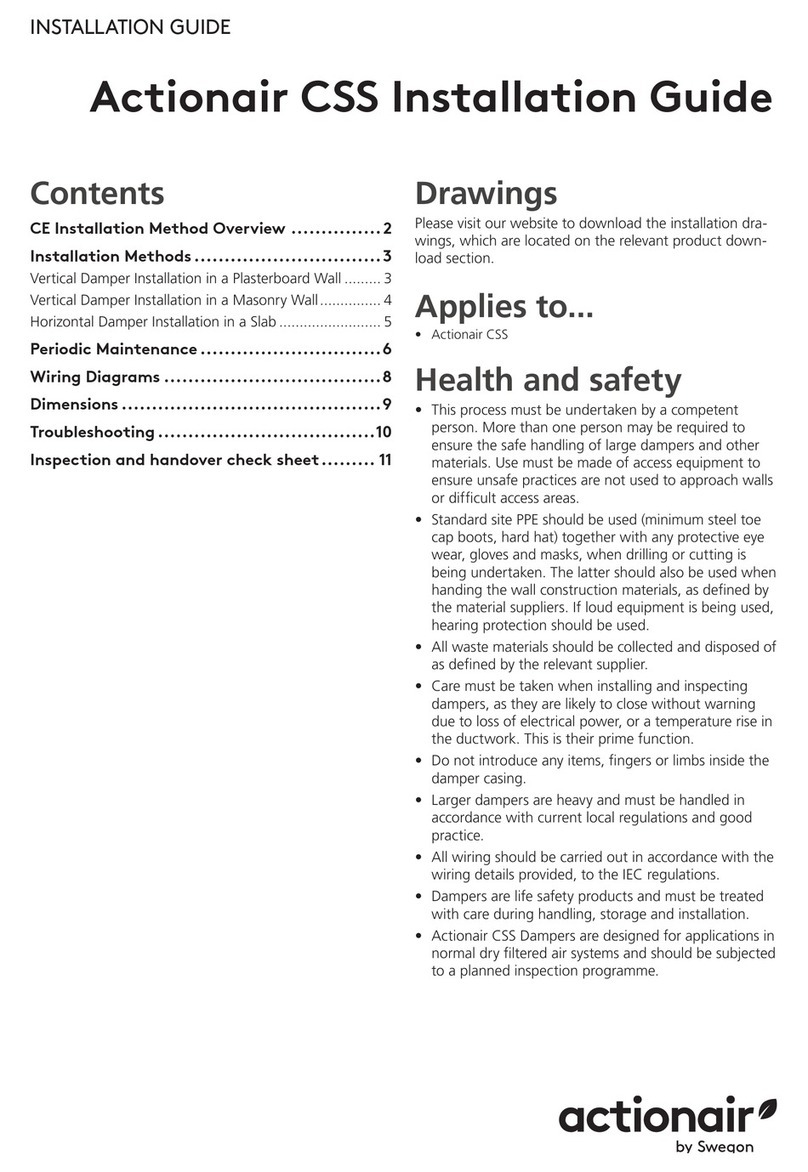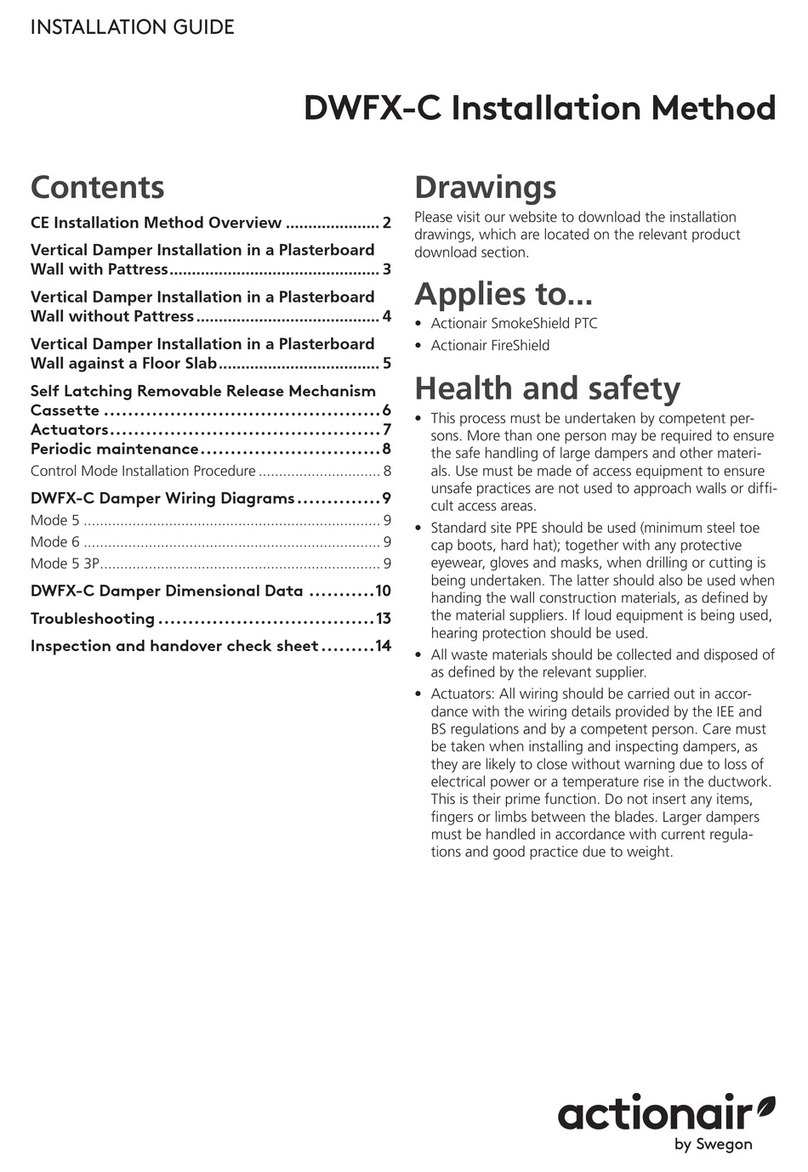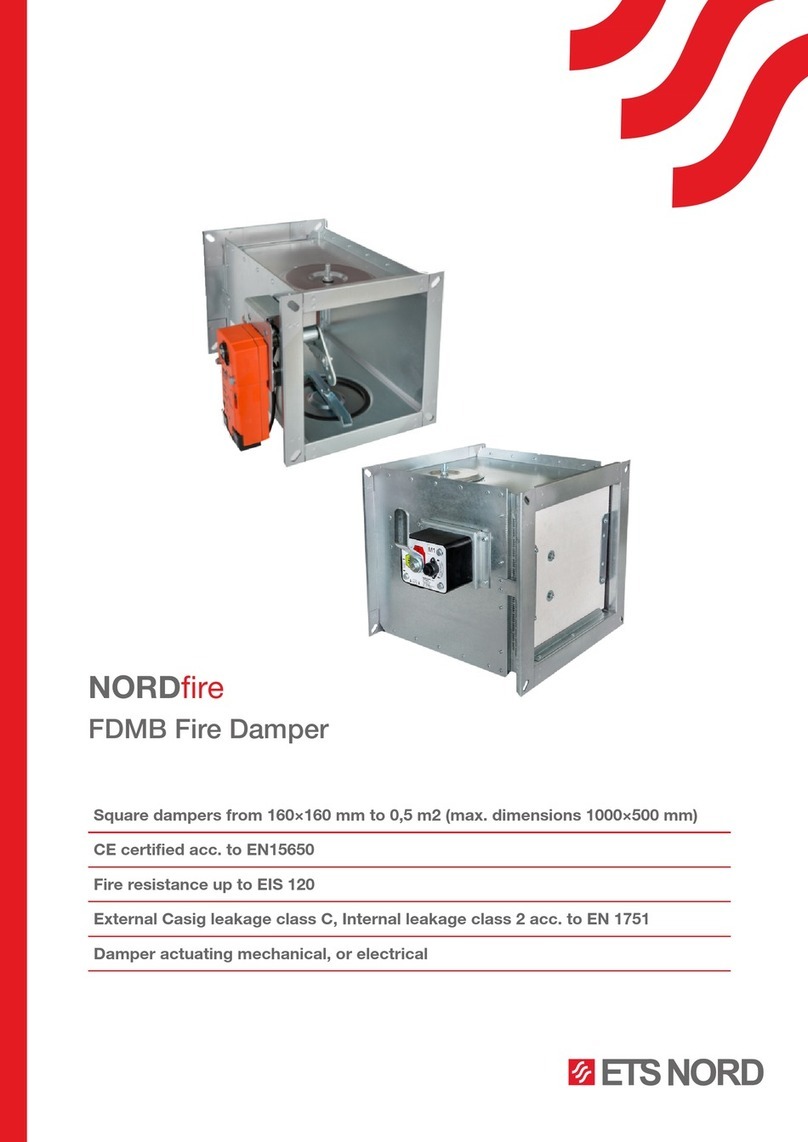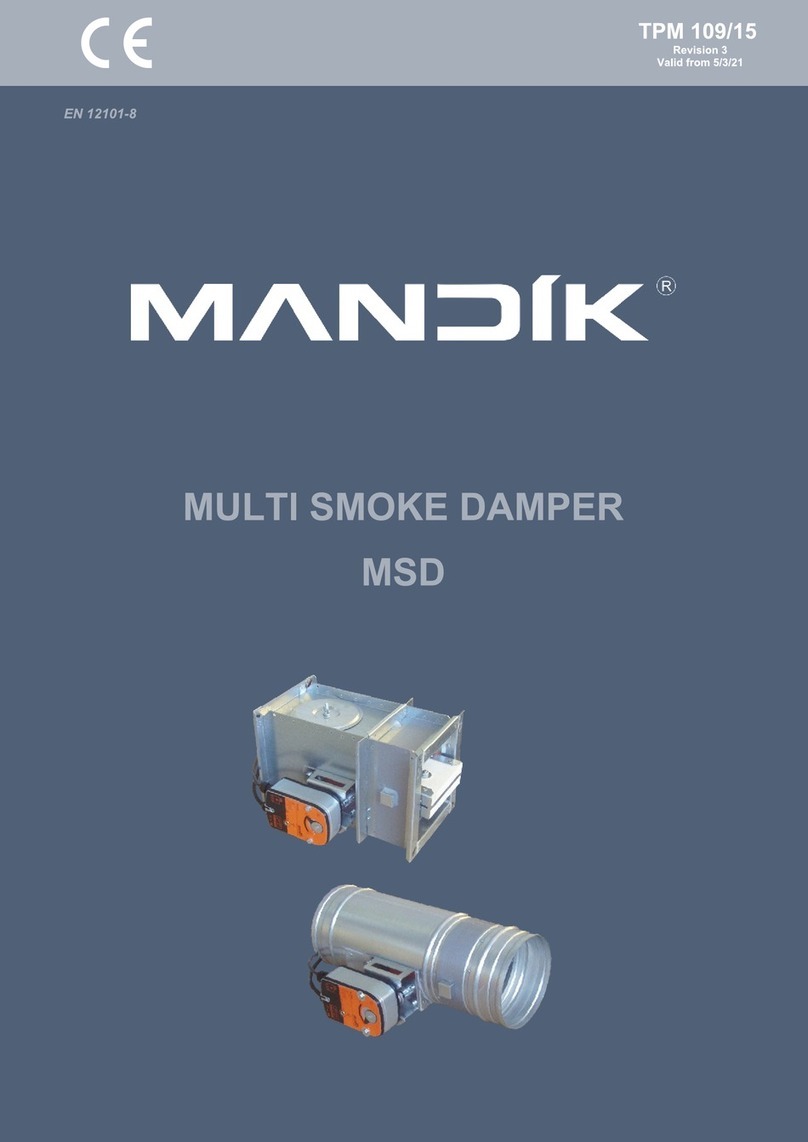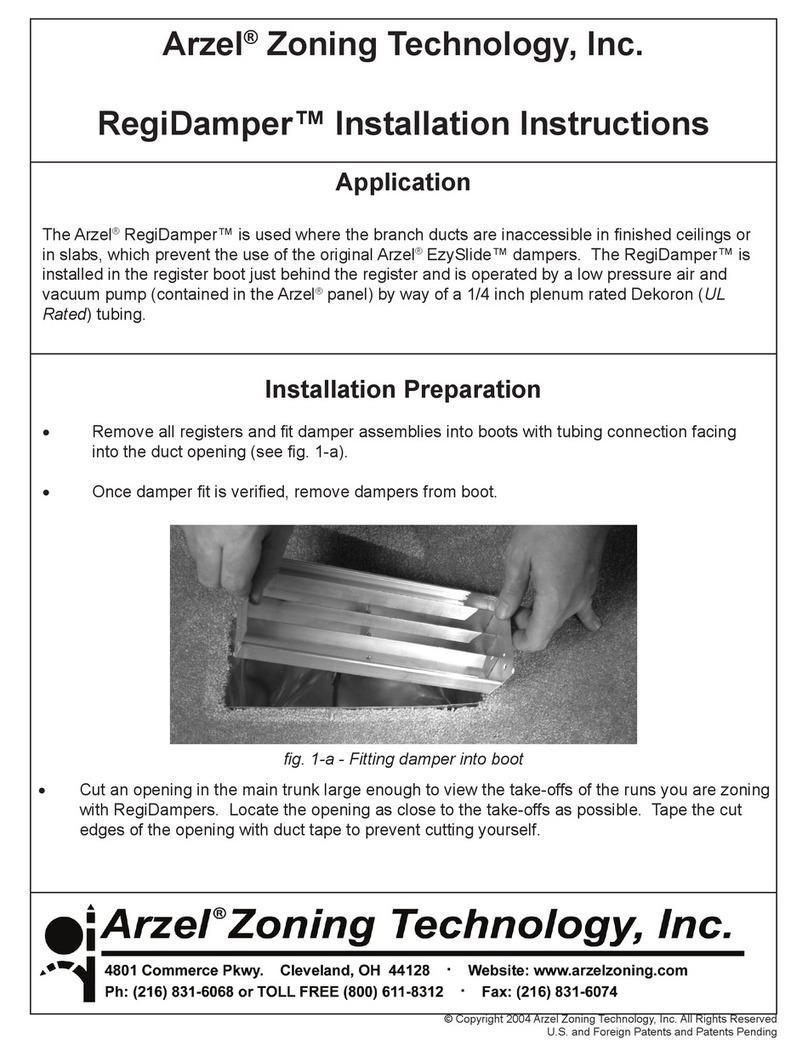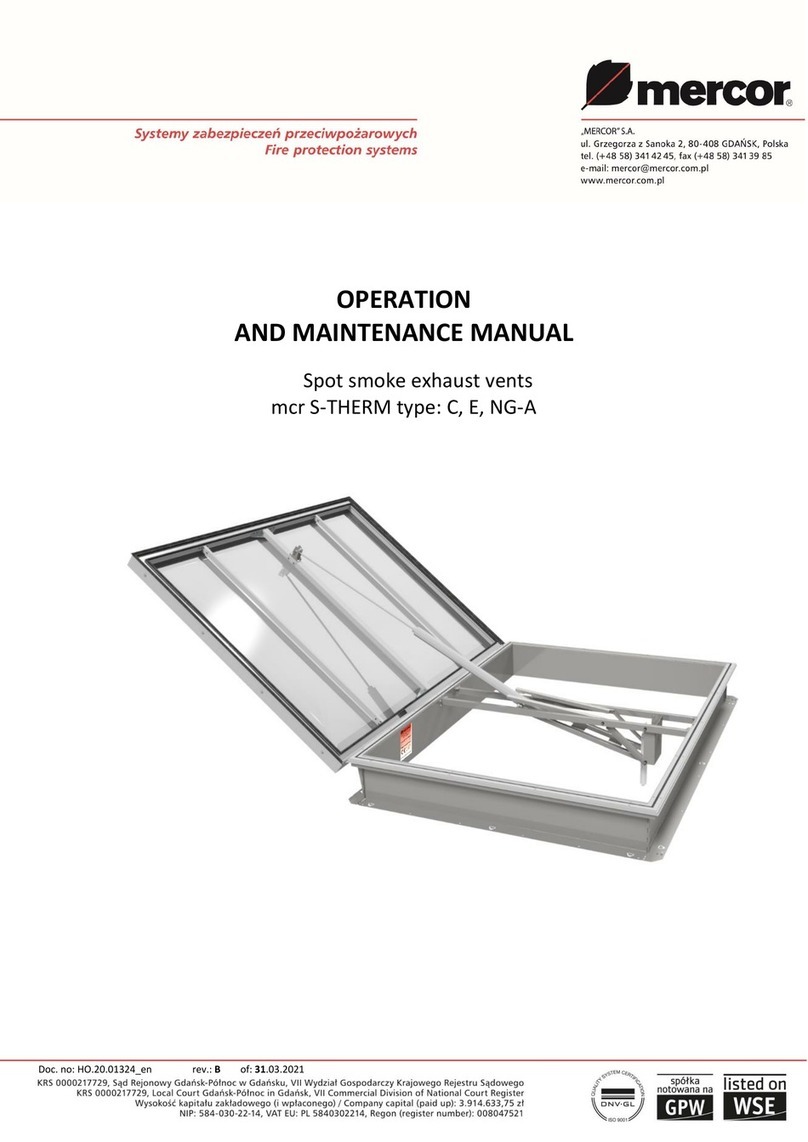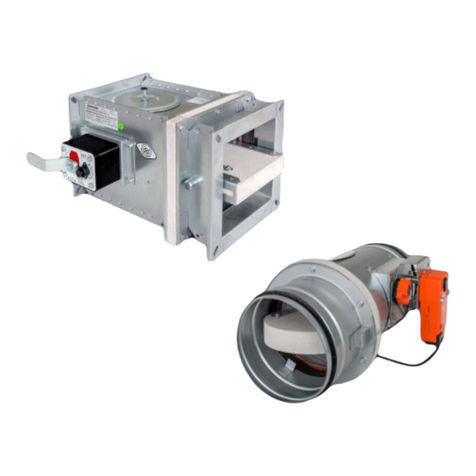
Inspection and handover check sheet Damper Installation Certicate
This certicate applies only to Actionair products. The installer
must complete this installation certicate when installing re and smoke dampers.
A separate certicate must be completed for each individual re and smoke damper.
No. Question Action Tick
1 Are the dampers the correct type? Conrm damper is correct type i.e. SmokeShield ¨
2 Are the dampers located correctly? The damper location is to be checked against the
installation drawings/details ¨
3 Are the dampers correctly identied? Unique system ID to be clearly indicated on the damper
or other agreed location. ¨
4 Have supports for both the damper and the adjacent ductwork
been installed in accordance with the approved manner? ¨
5Are the dampers tted in the correct orientation? Conrm the damper is installed the correct way up and
relative to airow and/or access. ¨
6Is access through the ductwork, to the damper unobstructed? Unobstructed space should be provided for safe access
to the damper. This must include access through ceiling
voids and adjacent services. Damper installer to advise
the system designer if problems are foreseen.
¨
7 Has the space around the damper and within the opening been
left clear and not been used for other services?
Other services within the installation opening will
invalidate the installation method. Damper installer to
advise the lead contractor if problems are foreseen.
¨
8 Using the access opening provided, are the damper blades in
the open position?
Check position of damper blades. ¨
9 Has the damper been checked for internal cleanliness, free
from damage and that vertical casings in particular are free
from debris?
With the damper in the closed position, inspect for
damage. ¨
10 Has the damper been released to simulate operation of the
thermal release? (Damper drop test)
Ensure damper operation is free from interference. ¨
11 Have the damper blades been re-set following drop test and
the access panel replaced?
After re-setting the damper, check the position shown
on the blade position indicator is correct. ¨
12 At the time of damper handover, is the re barrier and
penetration seal complete?
Damper installer to record on the handover register if
any following trades are still to complete their activities. ¨
13 Is the damper installation complete and available for handover
prior to system commissioning?
Obtain the relevant acceptance of the damper installation
from the CDM coordinator. ¨
14 Is the completed handover register cross-referenced back to
the identication codes listed in the system designers damper
schedule?
¨
Damper Unique System I.D:
Name of installation location:
Address:
Installation location identication section/oor/room:
Damper product type:
Release fuse temperature:
Notes/Considerations:
Installed by:
Company Name:
Address:
Company Telephone No:
Installers Name:
Installers Telephone No:
Date of installation:
It is hereby veried that the damper detailed above has been installed and tested according
to the manufactures recommendations:
Installers signature: Date:
